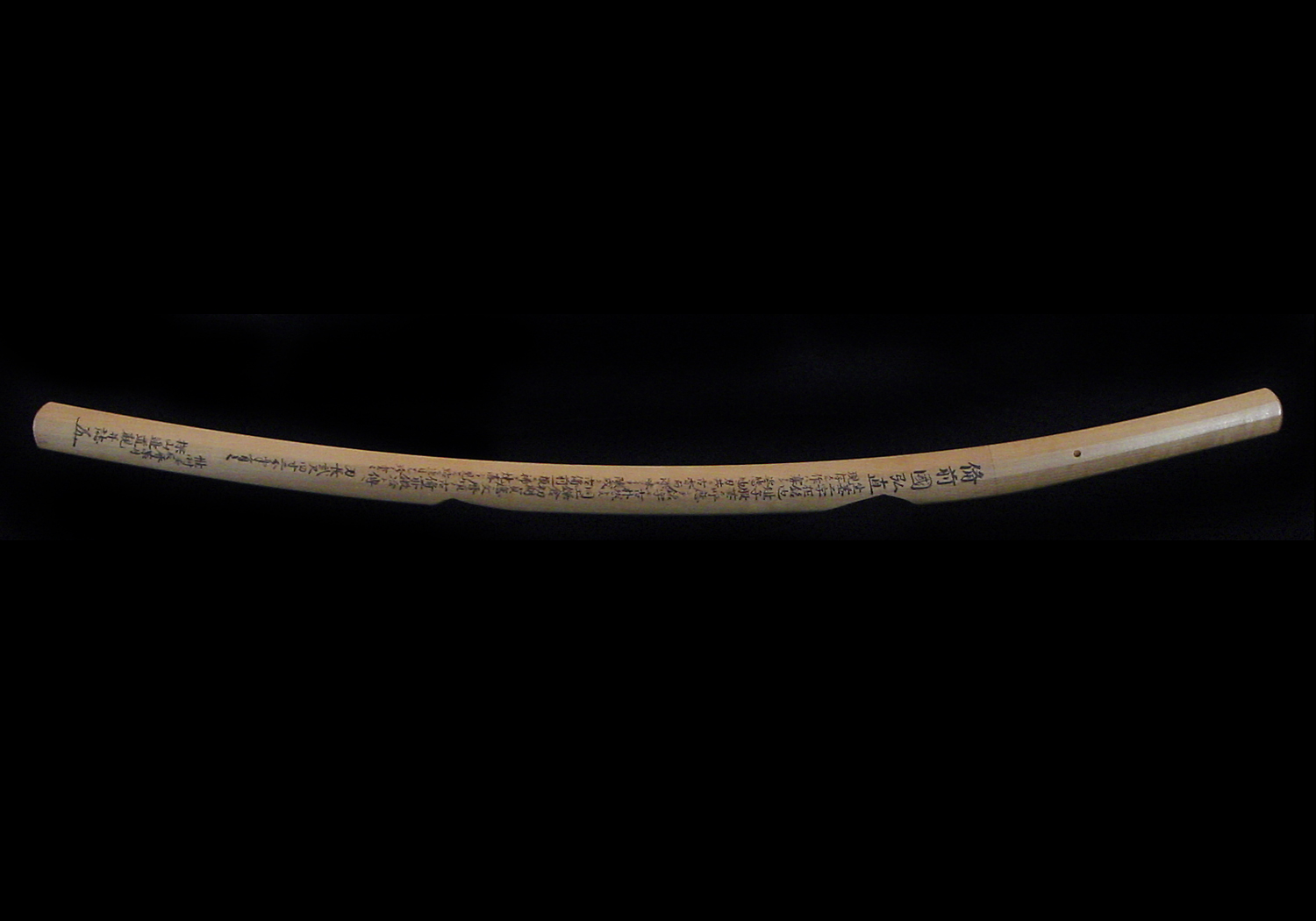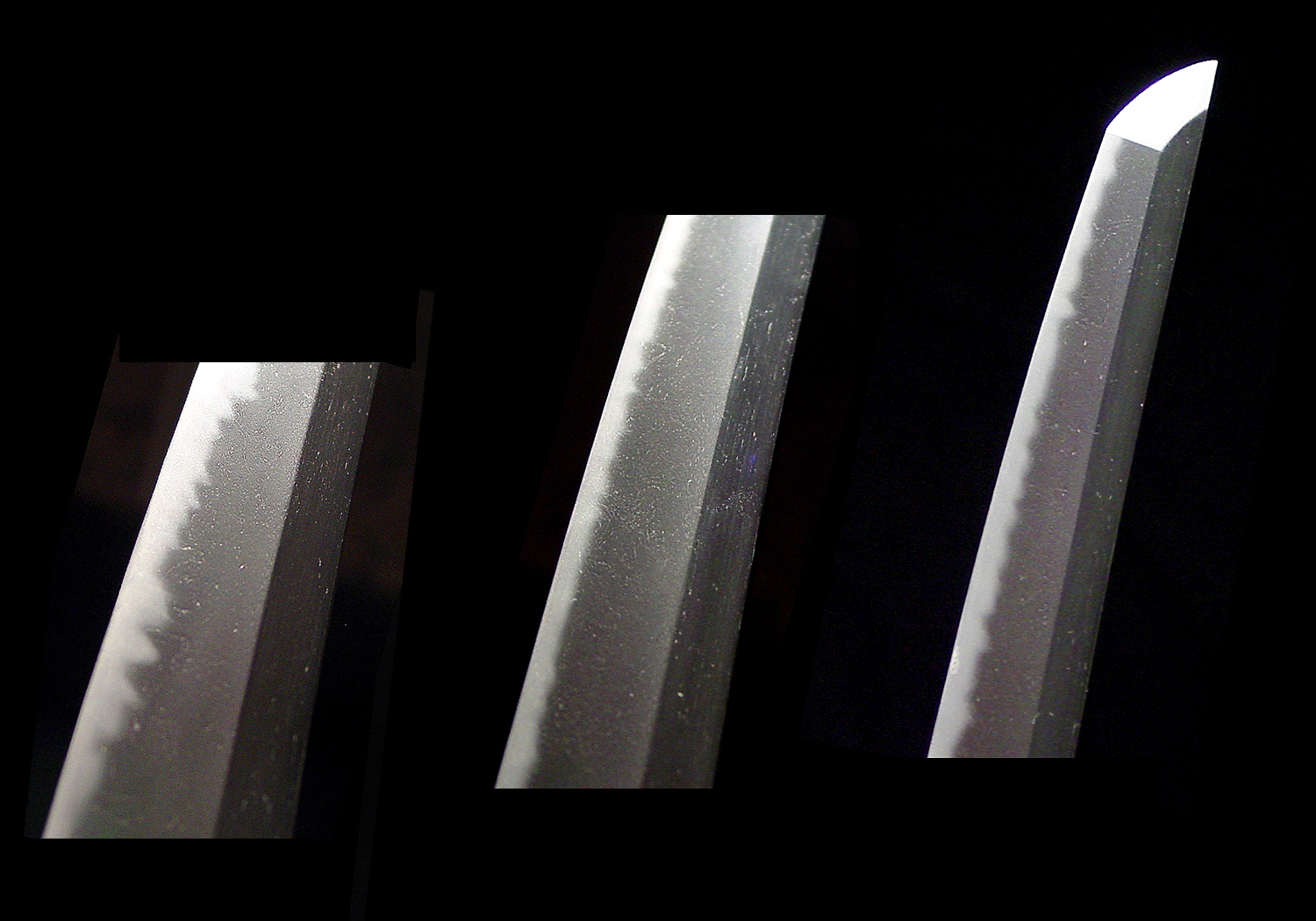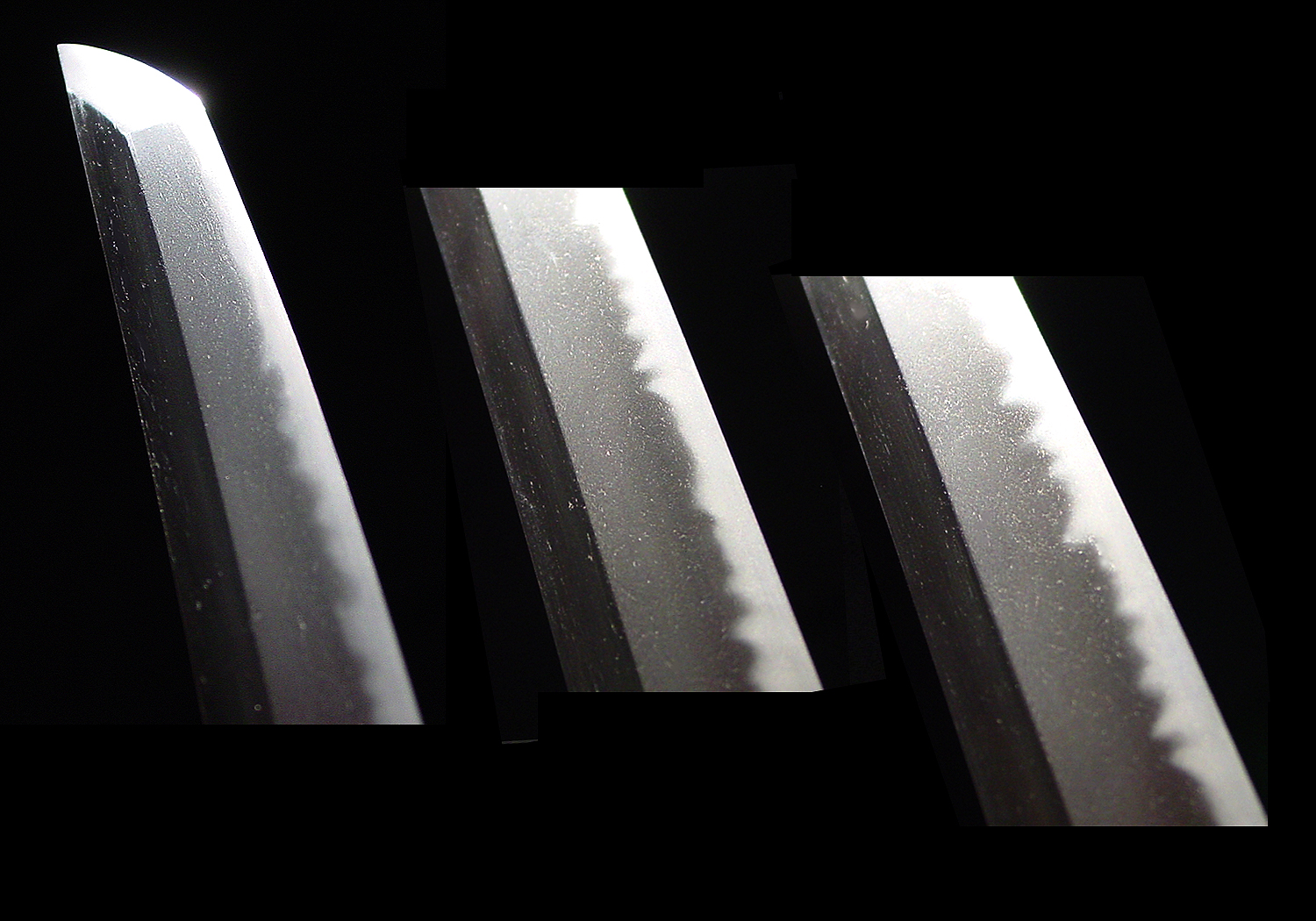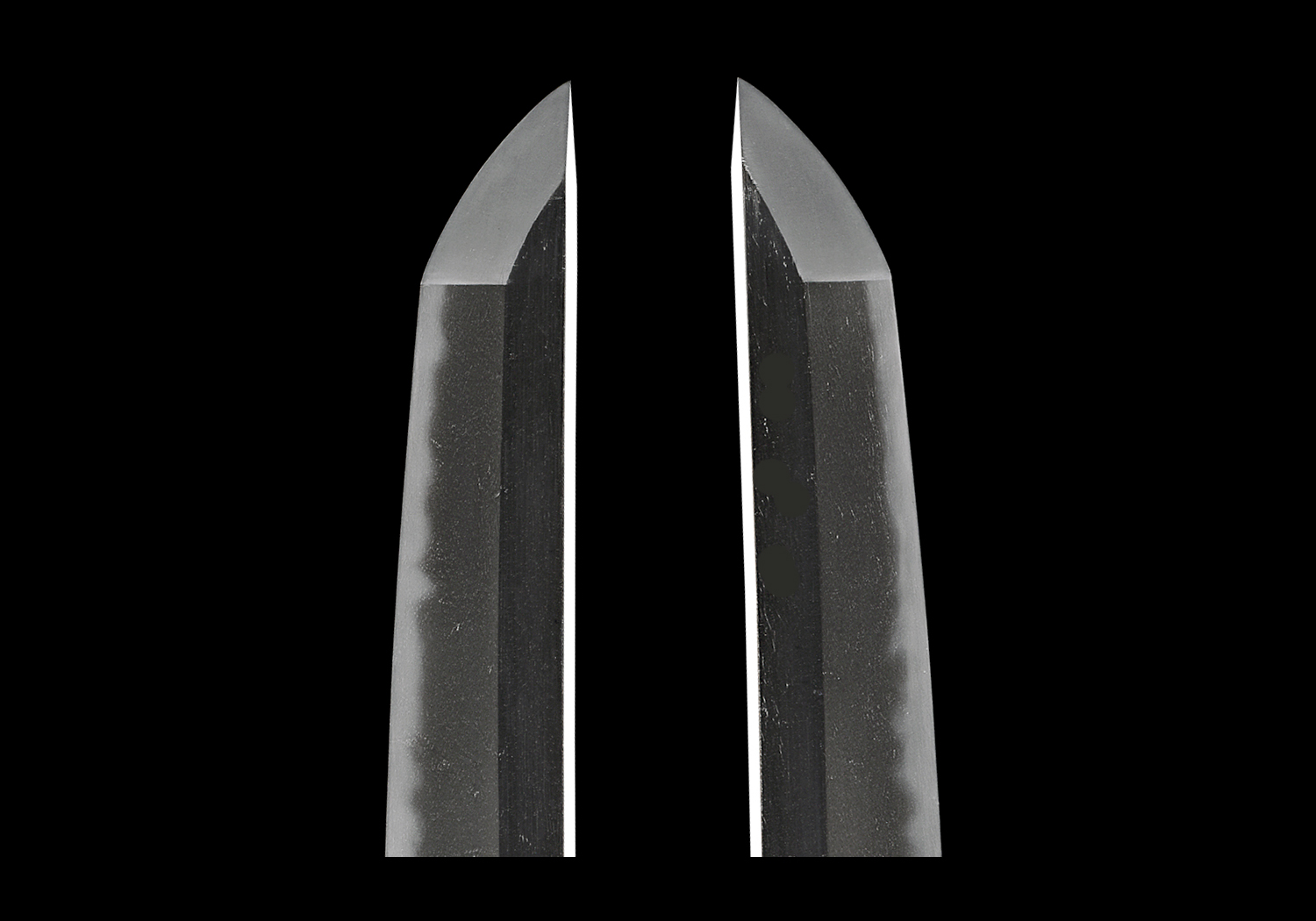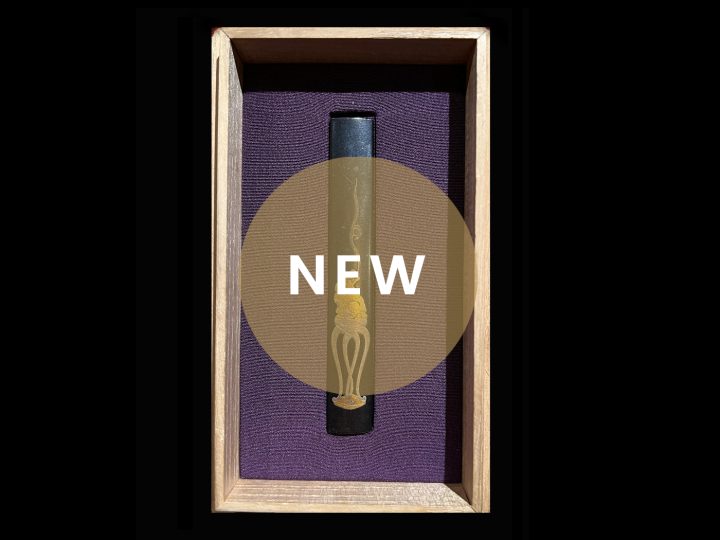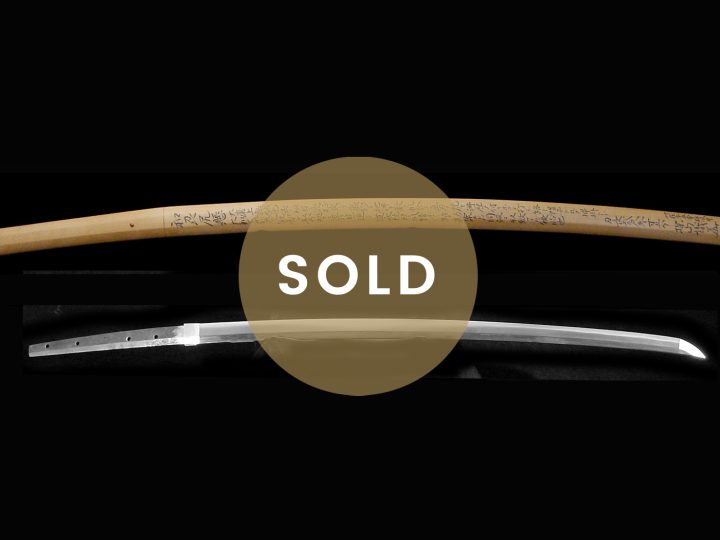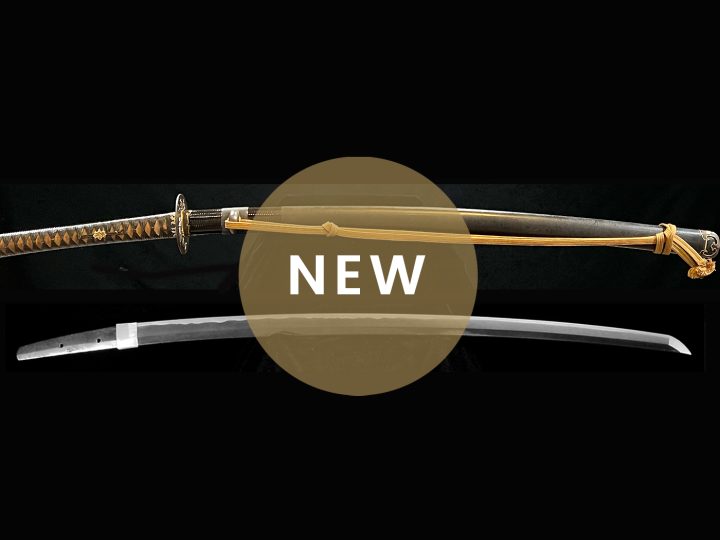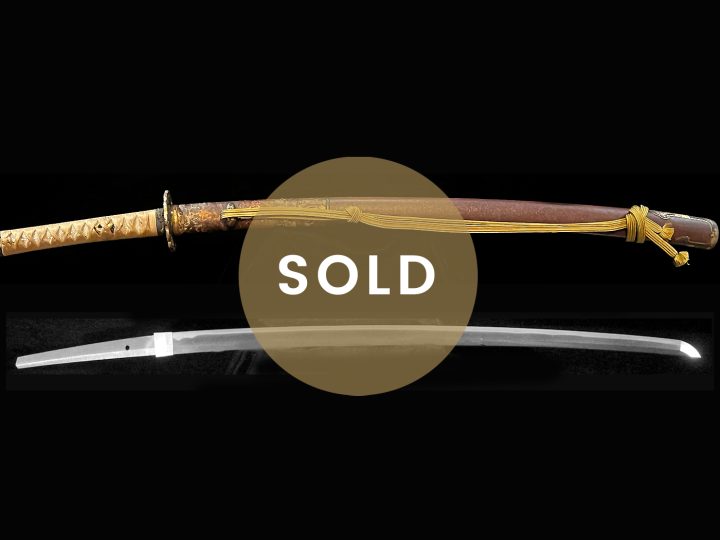
The Bizen Province, since ancient times, produced many fine swordsmiths who worked throughout all the periods of sword history from Heian down through the Shinshintô periods and, indeed, even today. Various reasons are given for this situation and the answer probably rests with the fact that Bizen has been a source of good sand iron, a source of making good charcoal (Bizen even today produces some of the best charcoal in Japan), and a ready supply of good water. All the basic ingredients of sword making. It was in this area where the conditions were almost perfect that during the Heian Era the Ko-Bizen school started.
The term “Ko-Bizen” has meant Bizen smiths who were active and swords that were made in Bizen Province up to the Genryaku Era (1181). Bizen has produced the largest number of fine swordsmiths throughout the history of the Japanese sword and overwhelmed other provinces between the middle of the Hein and Kamakura Periods. General workmanship of Bizen swords is as follows; their sugata looks somewhat less elegant than that of Yamashiro swords but more powerful…….. The itame and ko-itame hada of Bizen swords are a little rougher than those of Yamashiro swords but finer than that of Hoki swords…….. Utsuri is one of the important features of Bizen swords and becomes conspicuous on their works from the middle of the Kamakura Period. They temper ko-midare in ko-nie-deki accompanied with thick nioi-guchi and their hamon in nioi-deki is never seen……..
The classic workmanship mentioned above was still demonstrated by Ko-Bizen smiths after the beginning of the Kamakura Period…….. I think that we should reset the active term of Ko-Bizen smiths and get rid of the later limit of the Genryaku Era (1181). (Nihon Kotô Shi by Dr. Honma Junji).
The origins of the Ko-Bizen school, which is the oldest among the Bizen schools, start in the late Heian period and continued into approximately the middle of the Kamakura period. One theory has Sanenari (實成), who was reported to have been active around the Tenryaku Era (947-957) as the founder of the Ko-Bizen school. There being no surviving examples of his work, however, most people to think of his son, Tomonari (友成), and Sukenari (介成) as the founders of the school. Both smiths worked in the Eien Era (987-989).
There is another theory that says that the Ko-Bizen school was founded by the Ôshû Môkusa kaji (奥州網草梶). These were the sword makers working and arming the Emperor’s army for two famous uprisings in the middle eleventh century. In the Ôshû region of Northern Honshû, beginning there were two famous wars. The first was the Zenkunen no Eki (1056-1064) and the second was the Gosannen no Eki (1086-1089) These wars and disturbances continued from the latter part of the Fujiwara (藤原) Era for a number of years. There are records that the reigning Emperors sent swordsmiths to the Tohoku region (Ôshû) to make swords, and these swords were battle tested during the wars, it would be better to say that the methods for manufacturing weaponry vigorously advanced and developed because of this. Nihon Tô Koza page 134 (slightly paraphrased-FW).
While it was undoubtedly true that these wars advanced sword technology to say that they were the founders of the Ko-Bizen school does not make much sense since the acknowledged founders, Tomonari and Sukenari were living and working about one hundred years before these incidents. Further, the swordsmiths that were sent to this area to work and arm the troops were probably already practicing Ko-Bizen smiths.
Working contemporarily with Tomonari and Sukenari was one of the most famous of all Ko-Bizen smiths, Masatsune. Masatsune worked around the Chotoku Era (995-999) and left us many extant examples of his works. Another close contemporary was the famous smith Ko-Bizen smith, Kanehira. Kanehira is well known for his famous National Treasure sword the O-Kanehira, perhaps the one of the most famous sword in Japan.
During the beginning of the occupation at the end of World War Two, Dr. Honma was meeting with the commanding General of the occupational forces. The purpose of the meeting was for Dr. Honma to ask that the O-Kanehira, which was confiscated with all swords as a weapon of war, be returned to the Japanese government. When he was asked why this sword was so important, he responded by saying that it would be equivalent to the General asking the Japanese for the return of the Statue of Liberty should their roles be reversed. The General understood and the O-Kanehira was returned to the Government.
The basic characteristics of the swords some of the most famous Ko-Bizen school smiths are as follows. Some, if not all, of these traits can be found in the blades of other Ko-Bizen smiths (maybe just not all these traits in any one blade, however).
SUGATA: Ko-Bizen swords of the Heian Era will have a pronounced koshi-zori. Ubu blades by Tomonari will have strong funbari. The sori will bend down toward the tip giving the appearance of the upper third of the blade straightening out a bit. There will be a rather compact kissaki. Blades by Masatsune and Kanehira will tend to have a wider mihaba in many instances with not much tapering between the hamachi and kissaki. Also, they will not have as much funbari. The sori will increase a bit toward the tip and the kissaki will tend to be somewhat ikubi in appearance.
JITETSU: One can expect to find a well-forged and very fine ko-mokume with areas of o-hada. There will be chikei as well as jifu-utsuri. In Kanehira, especially in his works with a large patterned hamon, there will be much ji-nie which results in yubashiri and chikei.
HAMON: With Tomonari the width of the hamon will be narrow and formed in ko-chôji midare. The overall style will be nie-deki. There will be an abundance of ko-nie which turns into everything imaginable. The nie and nioi clusters will form ashi, inazuma, and kinsuji. When he worked in nioi-deki, the hamon will be suguha-chôji.
With Masatsune the width of the hamon will be wider and done in nioi-deki. There will be nie clustered around the nioi with the pattern of suguha-chôji and nioi ashi running deep. The nie results in kinsuji and iazuma. This hamon with the workings found in it often confuses one into thinking that it is a blade of the mid-Kamakura Era rather than the end of the Heian Era.
Kanehira made two distinct types of hamon. The first was made narrow and formed in nie-deki with a pattern of ko-chôji midare with ko-midare mixed together with much nie not unlike the hamon of Tomonari. Deep ashi, inazuma, and kinsuji are present. He also worked in nioi with nie clustered around the nioi. The pattern is in suguha-chôji with variations in the width of the hamon. Nioi ashi will be seen in great numbers as well as inazuma and kinsuji as we expect to find in mid-Kamakura works of the Fukuoka Ichimonji school.
BÔSHI: The bôshi will generally be midare-komi with a shallow kaeri and lots of nie. Occasionally they will be yakizume also with an abundance of nie present.
NAKAGO: A good many of the extant Ko-Bizen blades have been shortened resulting in the original nakago either partially or completely lost. Ubu nakago will have sori and be made long with a tapering toward the tip. They are Kijimomo in some cases. When file marks (yasurimei) remain, they will be kiri,
MEI: Most commonly we a niji mei (two-character signature) cut high around the mekugi ana. When compared to the signatures on Shintô and Shinshintô blades the signatures on Ko-Bizen blades have a sloppy appearance. This points to the low literacy of the sword smiths of that period. On occasion the word “tsukuru” will be added. Unfortunately, most Ko-Bizen blades with be o-suriage so finding an ubu blade such as the example used for this article is extremely rare.

